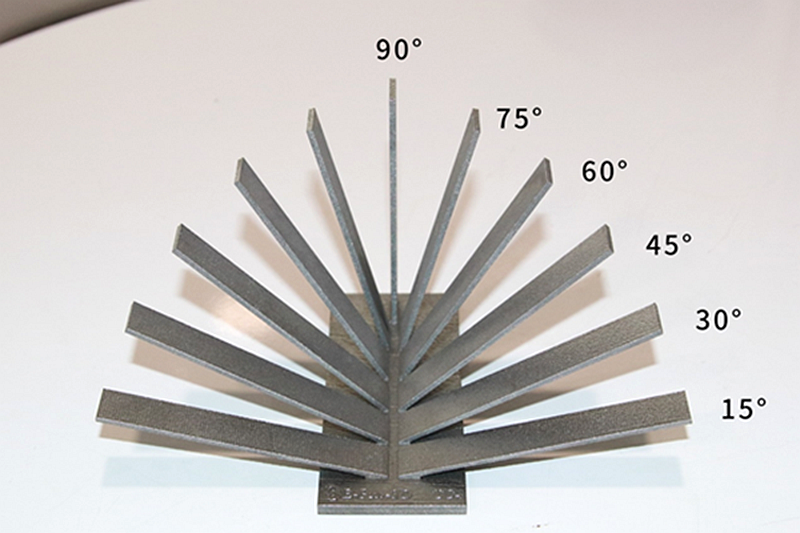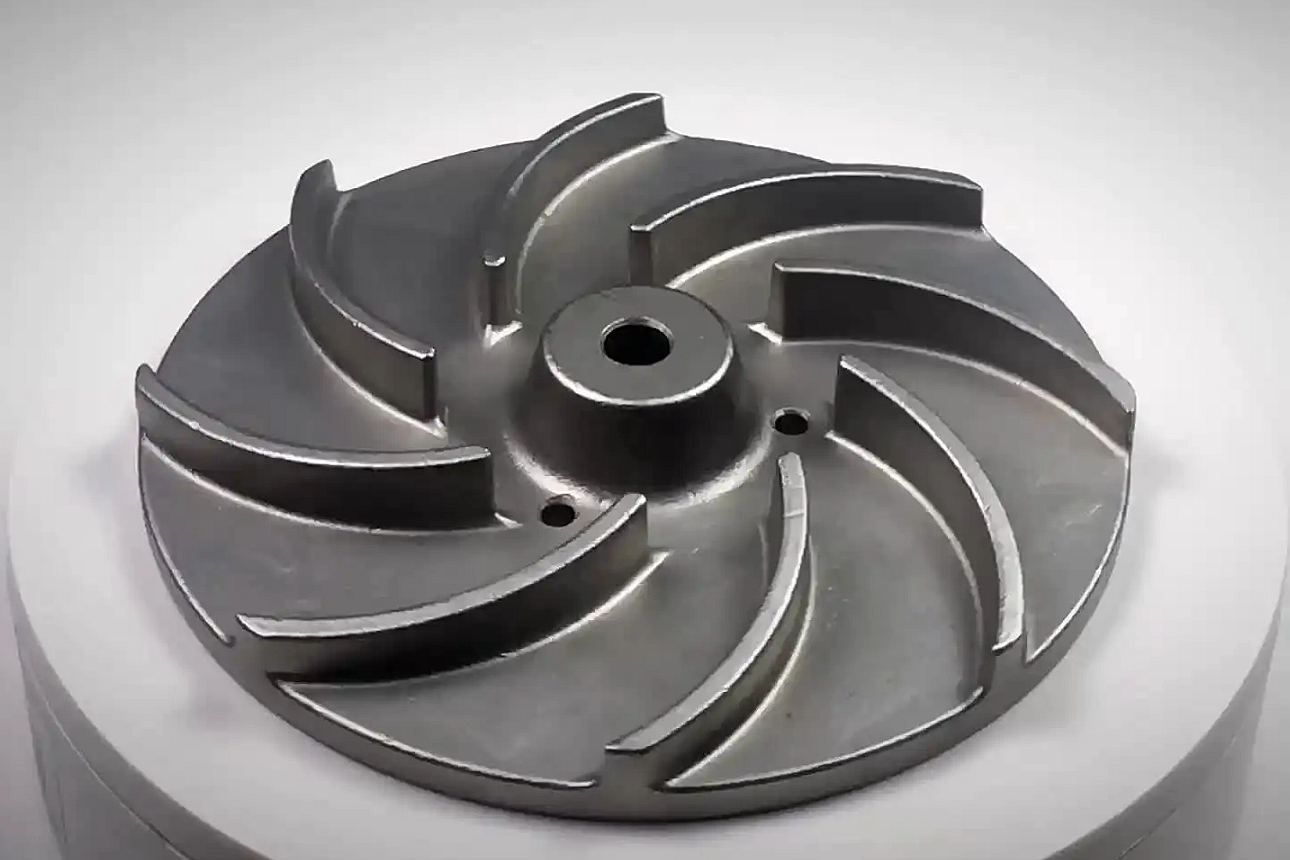WAAM Printing Capabilities for Carbon Steel Alloy Corrax
WAAM Printing Capabilities for Carbon Steel Alloy Corrax
Wire and Arc Additive Manufacturing (WAAM) technology has evolved significantly in recent years, providing manufacturers with a more efficient and precise way to produce complex, large-scale parts from various metal alloys. Among the materials suitable for WAAM, Carbon Steel Alloy Corrax has garnered attention for its unique blend of strength, weldability, and cost-effectiveness. As industries demand more durable and high-performance components, WAAM technology combined with Carbon Steel Alloy Corrax provides a reliable solution for producing high-quality industrial parts.

In this blog, we will delve into the capabilities of WAAM when printing parts from Carbon Steel Alloy Corrax. We will explore why Corrax is well-suited for this technology, the WAAM manufacturing process, post-processing methods, testing procedures, and the wide-ranging applications that benefit from this alloy's remarkable properties. By the end, you will understand how Tool Steel, when used with WAAM, can meet the challenges of modern manufacturing.
Why Carbon Steel Alloy Corrax is Ideal for WAAM
Carbon Steel Alloy Corrax is a specialized material designed to offer an optimal balance of strength, toughness, and workability. It is a great candidate for various additive manufacturing techniques, including WAAM. Understanding the material properties of Corrax alloy is critical to appreciating its advantages in the WAAM process.
Overview of Corrax Alloy
Corrax alloy is a carbon steel material known for its high strength and excellent weldability. Typically used in environments where wear resistance and durability are essential, Corrax exhibits good toughness, making it ideal for demanding industrial applications. The alloy’s composition is optimized for high strength, corrosion resistance, and improved hardenability, which ensures that parts produced from Corrax can withstand high-stress conditions and resist wear over time.
One of the standout features of Corrax alloy is its ability to be processed through welding techniques with minimal risk of cracking or defects. It makes it highly suitable for WAAM, a technology that relies on the precise deposition of layers of material under controlled conditions. The weldability of Corrax ensures that printed parts maintain their structural integrity even under high thermal cycles, an important factor for industrial components subjected to intense heat and mechanical stress.
WAAM Manufacturing Process for Carbon Steel Alloy Corrax
The WAAM process for Carbon Steel begins with precisely understanding the alloy’s material properties. In a typical WAAM process, a welding wire is fed into the arc, melting and deposing layer by layer. The controlled heat from the welding arc allows for strong bond formation between layers while maintaining material properties. This approach is precious when working with alloys like Corrax (CX), which require high precision and controlled thermal management during deposition.
Wire Feedstock and Material Choice
The process starts by selecting the appropriate wire feedstock. In the case of Corrax alloy, a high-quality wire of the alloy is chosen to ensure that the printed part exhibits the same material characteristics as the original. The wire is fed into the welding arc, which melts and forms the base layer. The subsequent layers are deposited on top of the previous ones, creating a 3D shape. The precise control over the deposition process allows for complex geometries and intricate designs that would be difficult or impossible to achieve with traditional manufacturing methods. It makes superalloy precision forging a complementary process in the final shaping and refinement of the part.
Corrax alloy's excellent weldability is crucial in the WAAM process. During printing, the molten metal solidifies rapidly upon cooling, creating strong bonds between layers without the risk of cracking or poor fusion. The ability to control the thermal profile and cooling rates during printing ensures that the final part retains its mechanical properties, including toughness, strength, and wear resistance. This level of control is especially critical for parts exposed to harsh environments, such as those used in marine and chemical processing industries.
Post-Processing for WAAM-Printed Corrax Parts
Post-processing becomes critical once the part is printed to ensure it meets the required mechanical and aesthetic standards. Post-processing techniques for WAAM-printed Corrax parts are essential for refining the surface finish, enhancing mechanical properties, and ensuring the part is ready for its final application.
Heat Treatment
Heat treatment is one of the most common post-processing techniques for Corrax alloy. After printing, the part may undergo a heat treatment process to relieve residual stresses that result from the rapid cooling and heating during printing. Heat treatment also allows the material to reach optimal strength and hardness, making the parts more durable and wear-resistant. Depending on the desired final properties, the part may undergo normalizing, annealing, or quenching.
Surface Finishing
Surface finishing is another essential post-processing step for WAAM-printed parts. While WAAM produces parts with good surface quality, they often require additional finishing to meet specific applications' smoothness and precision standards. Techniques like grinding, polishing, and machining improve the part’s surface finish and ensure dimensional accuracy. Additional surface treatments like coating or painting may be applied to enhance corrosion resistance for parts exposed to corrosive environments.
Welding and Joining
Sometimes, more than the WAAM process may be required to achieve the desired shape or dimensions. Additional superalloy welding may be required to finalize the part's structure or join different components.
Testing and Quality Control
Various testing methods are employed throughout the production process to ensure the quality and performance of WAAM-printed Corrax parts. These tests verify that the printed part meets the required mechanical properties and is defect-free.
Mechanical Testing
Mechanical Testing, including tensile, fatigue, and hardness testing, is essential to evaluate the strength and durability of Corrax alloy parts. Tensile Testing determines the material’s resistance to stretching, while fatigue testing evaluates how the material performs under repeated stress cycles. Hardness testing provides insight into the material's resistance to deformation.
Non-Destructive Testing (NDT)
Non-Destructive Testing (NDT) methods such as ultrasonic Testing, X-ray inspection, and visual inspections detect internal flaws or inconsistencies in the printed parts. These tests ensure the part is free from defects like cracks, voids, or porosity, which could compromise its performance.
Dimensional Inspection
WAAM-printed Corrax parts are subjected to dimensional inspections using tools like Coordinate Measuring Machines (CMM) to ensure the printed part adheres to the specified dimensions. This step is crucial to guarantee that the final part fits perfectly into its intended assembly or system.
Industry Applications of WAAM-Printed Corrax Parts
The versatility of Carbon Steel Alloy Corrax, combined with the precision and efficiency of WAAM technology, makes it a valuable solution for various industries. WAAM-printed Corrax parts are used in a wide range of applications, including:
Aerospace
Corrax alloy parts are increasingly used in aerospace applications, where strength, wear resistance, and high toughness are essential. Components like turbine blades, landing gear parts, and structural frames can be printed using Corrax, offering cost savings and performance enhancements over traditional manufacturing methods. The aerospace sector benefits from Corrax’s durability and high-performance characteristics in critical components.
Automotive
In the automotive industry, Corrax alloy manufactures engine components, exhaust systems, and structural elements that require strength and wear resistance. WAAM technology allows rapid production of these parts with complex geometries, helping automotive manufacturers reduce lead times and production costs. The ability to print such parts on demand streamlines manufacturing processes and improves efficiency.
Oil and Gas
The Oil and Gas industry requires materials that can withstand extreme conditions, including high pressures and corrosive environments. Corrax alloy, with its excellent resistance to wear and corrosion, is used for producing drilling equipment, valves, and pipeline components. Printing large parts on-site with WAAM offers significant advantages in reducing downtime and transportation costs and providing critical support to oil and gas operations.
Heavy Equipment and Machinery
Heavy machinery, including mining and construction machinery, often requires extensive, durable parts. WAAM printing of Corrax alloy offers a solution for producing solid and wear-resistant components that can handle the demanding conditions of mining and construction environments. It includes producing parts like gears, housings, and structural supports and ensuring equipment operates efficiently and with minimal downtime.
FAQs
What are the main benefits of using Corrax alloy for WAAM compared to other carbon steels?
How does WAAM reduce production costs for large-scale parts in industrial applications?
What post-processing techniques are required to achieve optimal strength and hardness in WAAM-printed Corrax parts?
How do non-destructive testing methods ensure the quality of WAAM-printed Corrax components?



